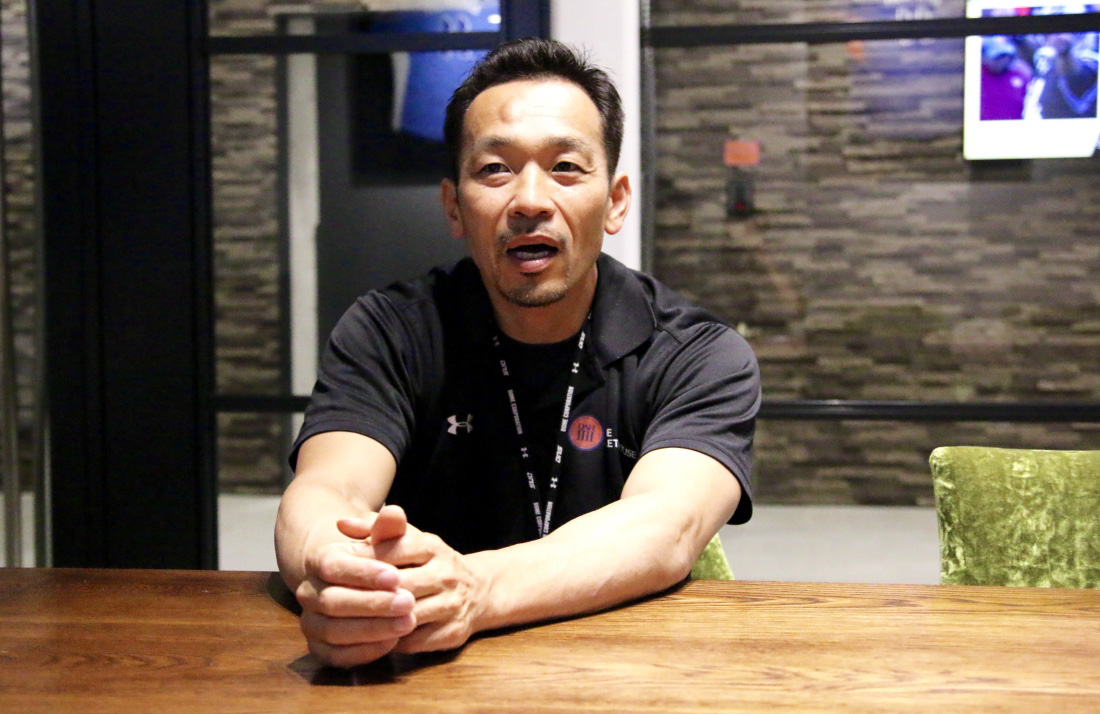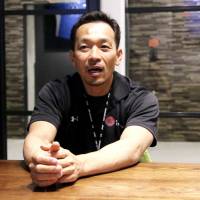The term "strength and conditioning" in sports is relatively unknown in Japan, and specialty coaches are often confused with athletic trainers, who are skilled in prevention, evaluation, treatment and rehabilitation of athletic injuries.
Strength and conditioning is a method of improving your physical athletic ability and performance using exercise, which includes weight training. So for Japanese athletes to get bigger, faster and stronger, it's almost required to become able to compete on par at the global level going forward as Japan will host some of the largest international sporting events, including the 2020 Tokyo Olympics.
Kazuhiko Tomooka, the performance director/general manager for the Dome Athlete House, a professional-level strength and conditioning training facility at Dome Corporation in Tokyo, insisted that strength and conditioning training is essential to improve athletes' performance, especially if they want to become elite.
Tomooka has served as the head strength and conditioning coach for the Montreal Expos and Washington Nationals before joining Dome, the licensed distributor for U.S. sports product company Under Armour in Japan (Dome supports many professional athletes in Japan, such as Fukuoka SoftBank Hawks star Yuki Yanagita and rugby's Akihito Yamada), in 2009. He recommended that athletes should begin strength training after reaching puberty in order to foster their athletic growth more effectively.
Tomooka said what's required to become a better athlete depends on a particular sport, but generally an athlete should start working on strength training in high school.
"You work on getting the right posture, core training, squatting, deadlift, bench (press), chin-ups, clean techniques . . . then you can get to work on higher-level training," Tomooka told The Japan Times.
Tomooka said that some forward-thinking high school teams and coaches have assigned their athletes strength and conditioning training, including weight lifting. He added that it is especially true in baseball.
"You see the baseball players' physiques have changed now," he said.
Tomooka is concerned that Japanese athletes focus too much on polishing techniques, playing just one sport, at younger ages.
"It's important to play in different ways, doing a lot of things, like jumping and crawling for elementary school children," said Tomooka, who earned a degree in health and human performance exercise and sports science at the University of Florida. "When you solely play soccer (since you are little), maybe you don't have a lot of room for growth athletically and it narrows down the range of your body movements."
Tomooka pointed out that Japanese athletes develop faster than other nation's athletes because of their intensive training focused on technique starting at an early age, but it is happening a little too prematurely.
"You can do things (to a certain degree) because you have technique, but they get precocious and reach the ceiling early because you don't have the physicality that you should have," Tomooka said. "So their 'prime time' comes faster. When you see the Little League baseball, soccer or gymnastics (athletes), they become top finishers until the age of 18. But past that point, their performances are going down. The athletes in the U.S. and Europe get better after 20 years old."
Tomooka cited Jordan Spieth, one of the world's top golfers, as a prime example of an athlete who didn't focus on one sport as a child.
"Jordan Spieth played so many different sports like baseball and basketball," Tomooka said. "Interestingly, he said he wanted to focus on one sport, but his mother was against it, saying he should play different things while he was little."
Some pro and college teams in the United States have started calling strength and conditioning coaches "athletic performance specialists" and similar terms in recent years, because they work to improve athletes' performance, not just making them bigger and stronger.
Whatever you call these specialists, their work is one of the key elements for further development of Japanese athletes in the future.




















With your current subscription plan you can comment on stories. However, before writing your first comment, please create a display name in the Profile section of your subscriber account page.